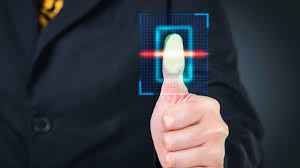Biometric Authentication

Logging into systems and online accounts requires authentication to ensure only authorized persons access their accounts. Many companies are staring to implement biometric authentication to prevent identity theft which has been widely committed with stolen passwords.
The authentication process typically involves entering a password that hopefully only users are aware of to access systems. Unfortunately, passwords can be stolen through malicious means, such as phishing and keylogging or even by prying eyes to steal passwords as they are entered or written down..
This is where biometric authentication is being considered for improved security. You may have noticed a lot of businesses and websites require a type of two-factor authentication in which case users desiring to login to their accounts are not only required to know a password, but also a code which is sent by email or text to either an e-mail address or mobile phone number. This tends to be a secure method, but can be time consuming and even frustrating, if access to the mobile phone isn’t so readily available at the moment, because maybe the battery needs a recharge or access to the e-mail isn’t so simple at the time, because there may be an issue there as well, such as forgetting the email account password, or system being down.
This can prove doubly frustrating if you happen to have an issue with both your e-mail on record with the account you are attempting to login into and your mobile phone. All of this can be solved if biometric authentication is in use and available. With this technique, an actual physical characteristic is checked to ensure that it really is you who is attempting to gain access to a protected account or area.
The most typically employed type of biometric authentication involves a fingerprint scan. This is arguably one of the best ways as we each have a unique fingerprint. There are other methods, however. These include retinal scans of the eye, facial recognition, and even voice recognition. There are even new methods available that use handwriting recognition that will detect discrepancies in the pressure of the stylus stroke or typing recognition that is able to detect discrepancies in the time delay between keystrokes, among others.
Many modern businesses are beginning to implement biometric authentication. Microsoft has a modern keyboard which has a built-in fingerprint reader. Citibank in Singapore has recently begun implementing voice recognition to identify a caller simply by analyzing and identifying the caller’s voice in order to cut down on customer service response times. Since the month of September in 2016, USAA has begun automatically signing up all new clientele with the ability to authenticate themselves biometrically.
The future of authenticating people using biometrics is strong as what better way is there to authenticate a person with a physical characteristic specific to only that person? That mentioned there are stumbling blocks in the way of this particular authentication method gaining full traction. The biggest of which happens to be users gaining access to the hardware required to authenticate themselves biometrically. Not everyone yet has a fingerprint reader, for example, after all. The other issue for security professionals relates to identity theft. If a person's unique physical data is stolen such as finger prints, how can we reset this static authentication data such as in the case of passwords.








